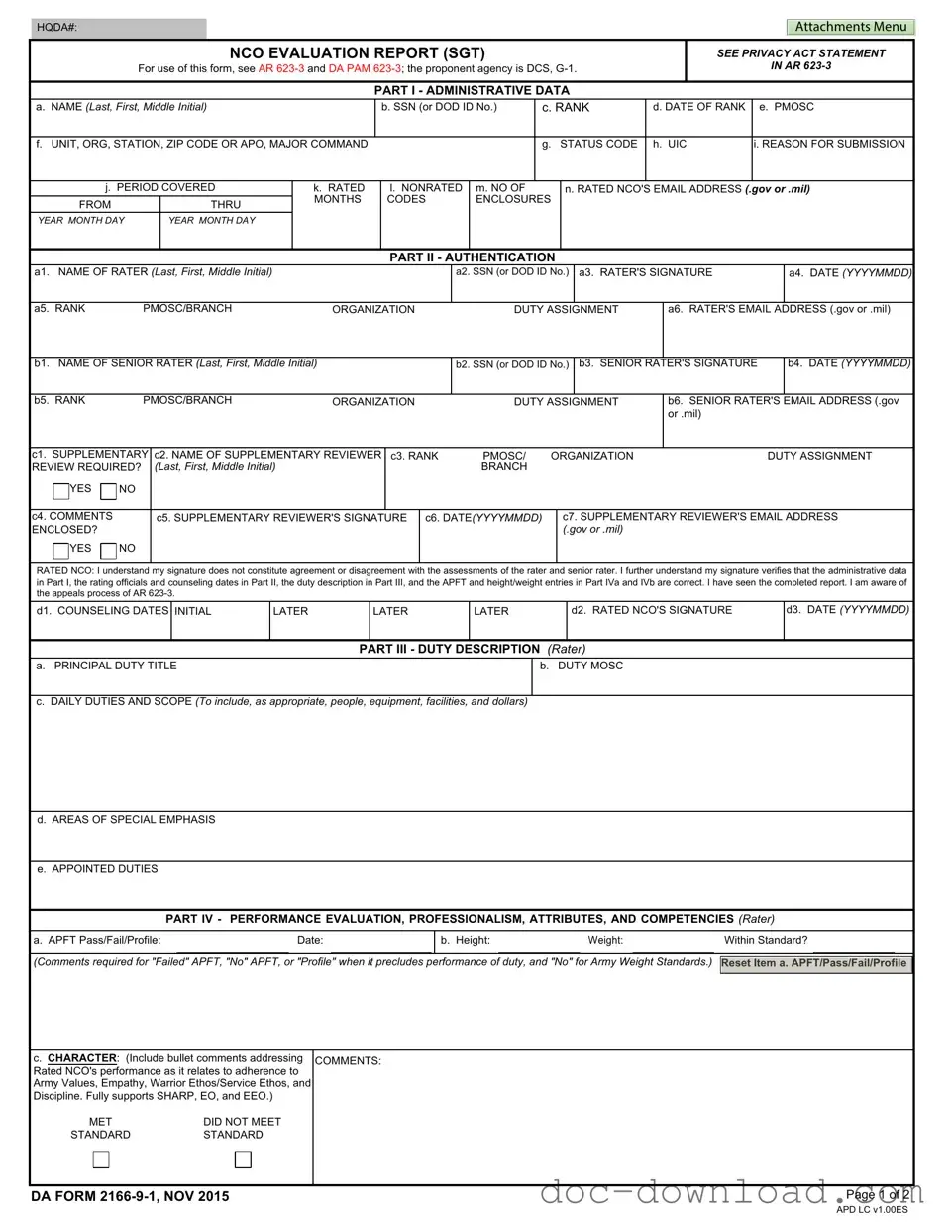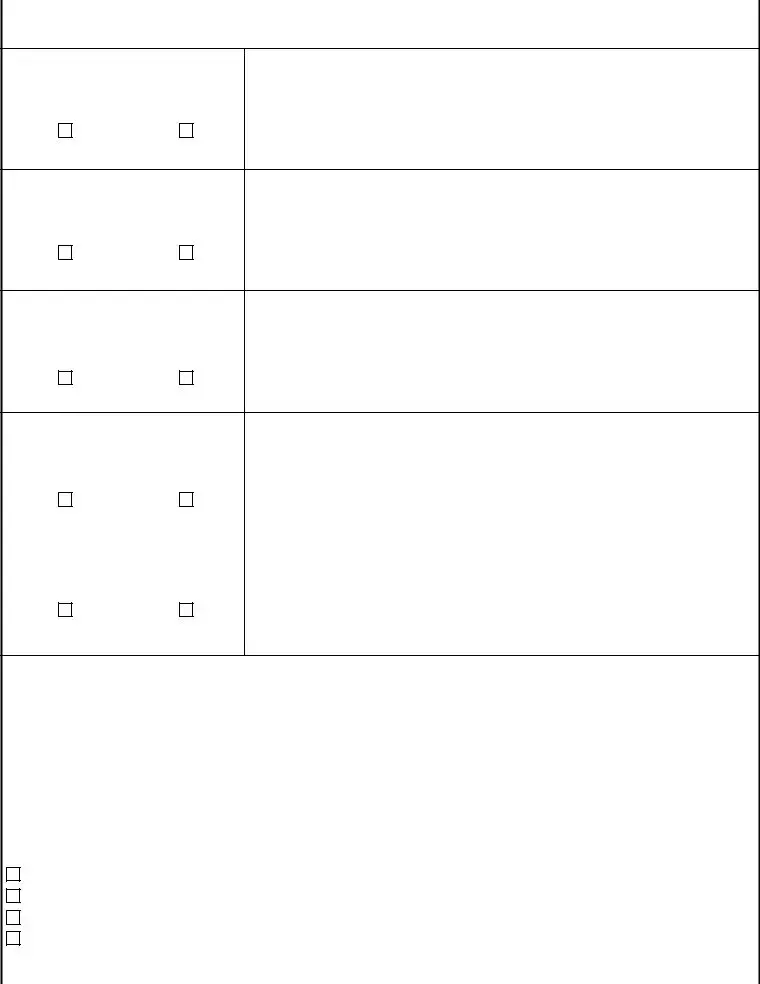The DA Form 2166-9-1 is similar to the DA Form 2166-9, which is the NCO Evaluation Report for higher ranks. Both forms serve the purpose of evaluating the performance and potential of Non-Commissioned Officers (NCOs). The DA Form 2166-9 includes a broader scope for evaluations, accommodating senior NCOs and providing a comprehensive assessment of their leadership abilities, professional development, and contributions to the Army's mission. Each form emphasizes the importance of feedback from both raters and senior raters, ensuring a well-rounded perspective on the NCO's performance.
Another comparable document is the DA Form 67-9, which is the Officer Evaluation Report (OER). This form is used for commissioned officers and shares a similar structure with the DA Form 2166-9-1. Both documents require detailed assessments of duty performance, leadership qualities, and potential for future assignments. They both also include sections for the rater and senior rater to provide their evaluations, fostering accountability and transparency in the evaluation process.
The DA Form 1059, the Academic Evaluation Report, is also similar in nature. It evaluates the performance of soldiers during training courses and educational programs. Like the DA Form 2166-9-1, it captures the soldier's achievements, areas for improvement, and overall potential. Both forms aim to provide constructive feedback that can guide future career decisions and professional development.
Additionally, the DA Form 4856, the Developmental Counseling Form, shares similarities in its focus on performance and growth. This form is used for one-on-one counseling sessions between leaders and soldiers, allowing for discussion of performance issues and setting goals for improvement. While the DA Form 2166-9-1 is more formal and structured for evaluations, both documents prioritize the soldier's development and well-being.
The DA Form 703, the Army Physical Fitness Test Scorecard, is another relevant document. It assesses soldiers' physical fitness levels, which is a critical aspect of overall performance evaluations. The DA Form 2166-9-1 incorporates physical fitness results as part of the assessment process. Both forms highlight the importance of maintaining physical standards and provide insights into a soldier's readiness and capability.
The DA Form 638, the Recommendation for Award, also shares similarities in its evaluative nature. This form is used to recommend soldiers for awards based on their performance and contributions. Like the DA Form 2166-9-1, it requires detailed descriptions of accomplishments and impacts, ensuring that deserving soldiers receive recognition for their hard work and dedication.
In the context of military documentation, understanding various evaluation forms is essential, and similar principles apply to legal documents such as the Georgia PDF Forms, which provide necessary frameworks for granting authority and managing responsibilities effectively.
The DA Form 4856-1, the NCOER Support Form, is another document that aligns with the DA Form 2166-9-1. This support form is used to establish performance objectives and expectations between the NCO and their rater. It facilitates ongoing communication about performance standards, making it a valuable tool for setting the foundation for future evaluations. Both forms emphasize the collaborative nature of performance management.
Lastly, the DA Form 7500, the Army Career Tracker, is similar in that it tracks soldiers' professional development and career progression. This form allows soldiers to document their training, education, and experiences over time. While the DA Form 2166-9-1 focuses on a specific evaluation period, both documents contribute to a comprehensive understanding of a soldier's career trajectory and readiness for future roles within the Army.


